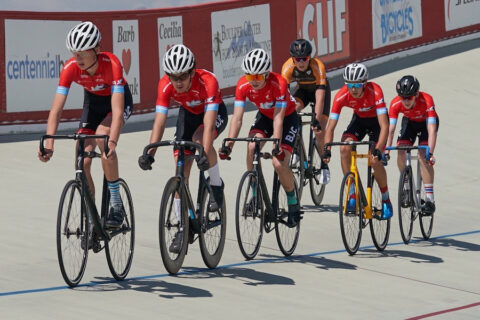
The Fundamentals of Sports Nutrition: How to Use Intuition to Improve Fueling
Data has its benefits, but only when we learn to apply an intuitive approach to our fueling can we unlock the most efficient and healthy sports nutrition habits.

Data has its benefits, but only when we learn to apply an intuitive approach to our fueling can we unlock the most efficient and healthy sports nutrition habits.

Crunching numbers is one thing, but if you want to turn data into victory, here are a few key things you should do and a few things to avoid.

HIT has many proven benefits and several big limitations. Trevor Connor explores how HIT works, its effects, and the most effective high-intensity interval workouts you can choose for specific gains.

The era of AI-augmented endurance coaching is here. New tools don’t just collect data—they intelligently interpret, adapt, and learn, helping data-driven coaches and athletes to refine their training.

Learn what aero sensors do for cyclists and whether or not the tech is worth adding to training.

While many athletes and coaches rely on TrainingPeaks to analyze and archive their training data, there are several other notable programs worth considering.

By tapping into the power of data analytics coaches can make important decisions more quickly and better prepare athletes for the specific demands of any given race.

Mike Norton leaned into his love of crunching numbers and applying science to differentiate his coaching services and offer more value for athletes.

What are the keys to success in ultra running, and are they the same across all distances?

They’re becoming incredibly popular, but where do CGMs fit into racing? Two elite coaches debate the merits and pitfalls of using wearable glucose monitors in competition.

We review some of the key findings in recent research on junior athlete development.

We dive deep into the world of AI to understand how it can be used for optimal training and performance.

Sam Laidlow took almost five minutes off the bike course record at the Ironman World Championship. We do a deep-dive analysis on his power file to find out how he did it.

Trying to predict your performance can be nerve-wracking but in this era of training metrics and numbers, data can tell you a lot.

Joe Friel details the ways in which coaches can identify strengths and weaknesses in movement patterns, motivation, and training execution.

The interrelationship between form, fitness, and fatigue is the basis for quantifying training load. Performance Management Charts help athletes visualize and interpret that balance. Coach Trevor Connor explains the science.

Physiologists and coaches have attempted to quantify training through both external and internal measures. We review the primary training metrics and detail the benefits and shortcomings of each.

We explore whether Strava and other new training apps can make you faster, and how to effectively fit them into a structured training plan.

Crunching numbers is one thing, but if you want to turn data into victory, here are a few key things you should do and a few things to avoid.